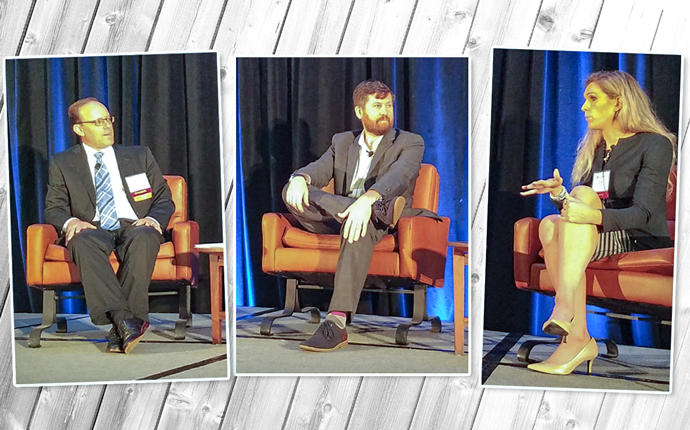Trending
Institutional investors are factoring climate change into real estate deals in coastal cities: panel
Fund managers are using technological tools to determine which areas face the most danger from sea level rise

The impacts of climate change are spurring institutional investors to consult imaging maps, computer models and big data to help make decisions about whether or not to buy real estate in Miami, New York and other major coastal cities around the world, according to real estate experts.
At a a sea level rise conference Thursday hosted by the law firm Hinshaw and Culbertson LLP, keynote speaker Billy Grayson said the National Oceanic and Atmospheric Administration’s Digital Coast website and real estate-focused big data produced by firms like GeoPhy are among the new tools investment managers are using. They help them to gauge the threat level climate change to properties being considered for acquisition, as well as existing buildings in a portfolio.
As executive director of the Urban Land Institute‘s center for sustainability and economic performance, Grayson said he’s spoken with 30 of the largest investment managers for wealth funds and institutional investors who believe climate change is an existential threat to real estate assets in cities dealing with sea level rise, flooding and coastal storms.
“We are getting more sophisticated and starting to get hyper-local risk assessments,” Grayson told the 200-plus attendees. “[Managers] are thinking about how not to overload someone’s portfolio with high-risk assets. People are starting to draw lines of where they will and will not invest.”
Laura Craft, another keynote speaker and head of global sustainability for real estate investment management at Heitman, said her firm uses an in-house due diligence team to conduct onsite analyses of properties, as well as determine what local jurisdictions are doing to build infrastructure to minimize the impacts of climate change.
“We also hire third-party consultants, usually engineers, to do deeper dives to understand what is being done at the city level,” Craft said. “We are using projection models. If it goes above a certain threshold, it means the property is more vulnerable and a physical threat could happen.”
Craft said institutional investors want data in order to formulate how much capital to put into a building to make it more secure and safe, and to factor in the fluctuating cost of insurance premiums. “We are all working on how to price the risk into the deal,” she said. “Before we really didn’t have the tools to assess portfolios. We used to rely on FEMA maps and a few other sources.”
During a panel discussion, Jessica Elengical, a director for global investment firm DWS Group, said it is up to investment managers to arm buyers with the right tools to make better acquisitions in areas facing impacts of global warming and sea level rise. “Our investors are more aware of these issues and are looking to us to provide more guidance,” Elengical said.




